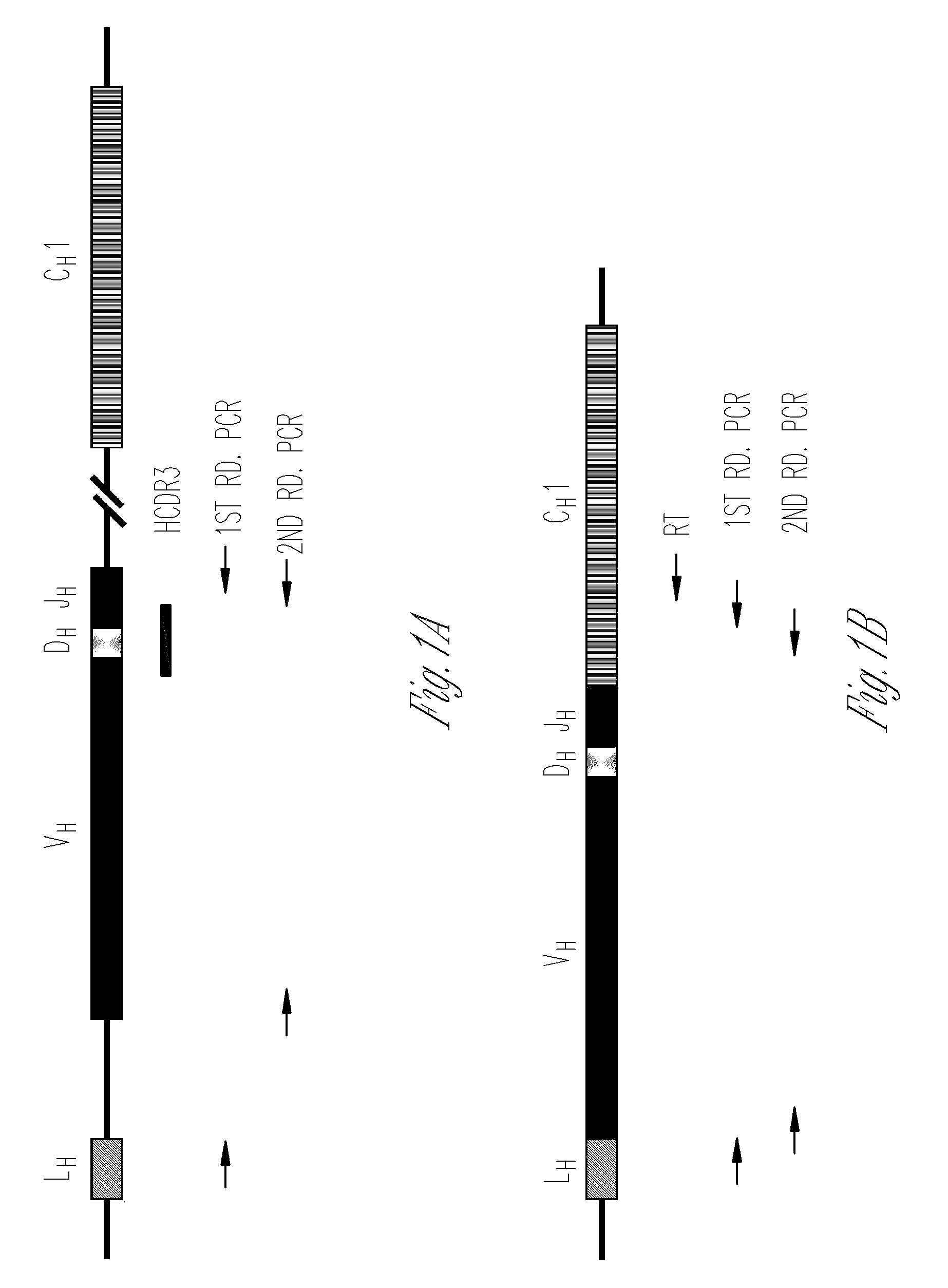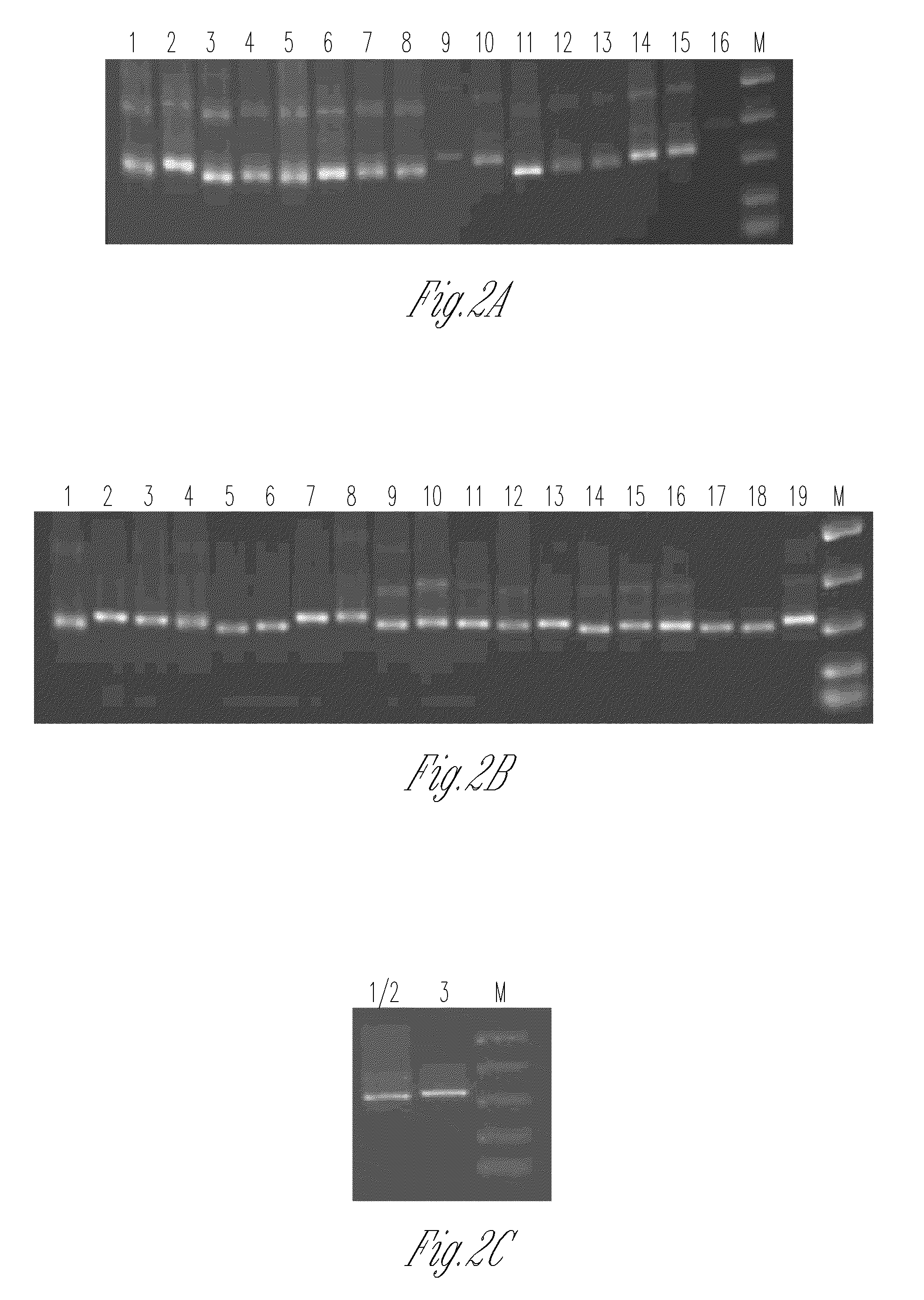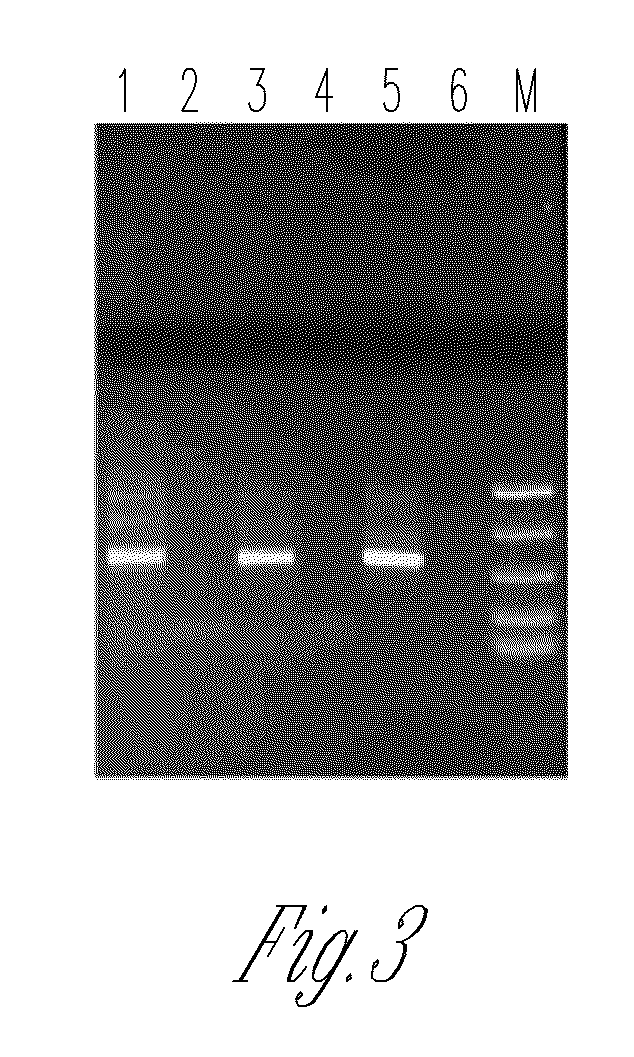Ig genes specific oligonucleotides and uses thereof
a technology of oligonucleotides and immunoglobulin, applied in the field of immunology, can solve the problems of pcr detection limit, inability to amplify all v gene segments, degenerate or otherwise, etc., and achieve low degeneracy, low cross reactivity, and high specificity and sensitivity.
- Summary
- Abstract
- Description
- Claims
- Application Information
AI Technical Summary
Benefits of technology
Problems solved by technology
Method used
Image
Examples
example 1
[0117]BALB / c and CBA / J inbred strains of mice were from The Jackson Laboratory, and were bred and maintained in the Small Animal Facility of the National Institute of Immunology. Mice used for experiments were 6 to 8 wk old. Approval from the Institutional Animal Ethics Committee was obtained for all experimental procedures involving animals.
PCR Amplification of Rearranged VH and VL Genes from Splenocyte Genomic DNA
[0118]Genomic DNA was isolated from 2×107 splenocytes from CBA / J mice using a commercially available genomic DNA isolation kit following the manufacturer's instructions (Qiagen, Germany).
[0119]A nested PCR was performed for amplifying the rearranged VH and VL gene families. Family targeted PCRs were set up for each V gene family using H chain primer sets 3-18, K L chain primer sets 21-39 and λ L chain primer sets 41-43 (Table 6) and genomic DNA from splenocytes. The 50 μl first round PCR mix consisted of 1×PCR buffer 1,200 μM dNTPs, 0.25 μM external 5′ (V gene) and 3′ (J ...
example 2
Construction of Rearranged V Gene Family-Specific Libraries
[0124]V gene family-specific primers and AmpliTaq DNA polymerase were used for amplifying 6 randomly selected VH (VH1, VH4, VH5, VH8, VH11 and VH15) and 6 Vκ (Vκ3, Vκ4, Vκ11, Vκ13, Vκ14 and Vκ17) families and the 3 Vλ (i.e. Vλ1, Vλ2 and Vλ3) genes using splenocyte genomic DNA from CBA / J mice. The PCR products obtained were purified using columns (RBC, Taiwan), cloned in TOPO-TA cloning vector (Invitrogen, USA) and transformed into E. coli strain XL1 Blue. Four to six recombinants from each V gene family-specific library were sequenced using an automated DNA sequencer. IMGT and IgBLAST databases were used to assign the germline gene segments utilized in the H and L chain. L chains with the same VL and JL gene segments were considered independent rearrangements if the VL to JL junctions were different. Rearranged V genes recovered from the libraries that had identical sequences were scored once.
[0125]The VH1, VH4, VH5, VH8, VH...
example 3
Preparation of Pooled 5′ External and Internal Primer Mixes
[0127]For applications where the identity of the rearranged / expressed VH and VL gene is not known, we used pooled primer mixes for (RT-) PCR. Separate external and internal primer mixes were made for VH, Vκ and Vλ gene families. The VH external primer mix was prepared by pooling 17 external primers targeting all the VH gene families at a concentration of 2 μM each (Table 1). Similarly, the VH internal primer mix was prepared by pooling the 17 internal primers targeting all the VH gene families. Likewise, external and internal primer mixes were made for the Vκ and Vλ gene families (Table 2 and Table 3).
[0128]Pooled 5′ external VH primer mix consisted of primers SEQ ID NO. 1, SEQ ID NO. 2, SEQ ID NO. 5, SEQ ID NO. 7, SEQ ID NO. 9, SEQ ID NO. 11, SEQ ID NO. 13, SEQ ID NO. 15, SEQ ID NO. 17, SEQ ID NO. 19, SEQ ID NO. 21, SEQ ID NO. 23, SEQ ID NO. 25, SEQ ID NO. 27, SEQ ID NO. 29, SEQ ID NO. 31 and SEQ ID NO; 33.
[0129]Pooled 5′ e...
PUM
| Property | Measurement | Unit |
|---|---|---|
| Tm | aaaaa | aaaaa |
| Tm | aaaaa | aaaaa |
| temperature | aaaaa | aaaaa |
Abstract
Description
Claims
Application Information
 Login to View More
Login to View More - R&D
- Intellectual Property
- Life Sciences
- Materials
- Tech Scout
- Unparalleled Data Quality
- Higher Quality Content
- 60% Fewer Hallucinations
Browse by: Latest US Patents, China's latest patents, Technical Efficacy Thesaurus, Application Domain, Technology Topic, Popular Technical Reports.
© 2025 PatSnap. All rights reserved.Legal|Privacy policy|Modern Slavery Act Transparency Statement|Sitemap|About US| Contact US: help@patsnap.com



